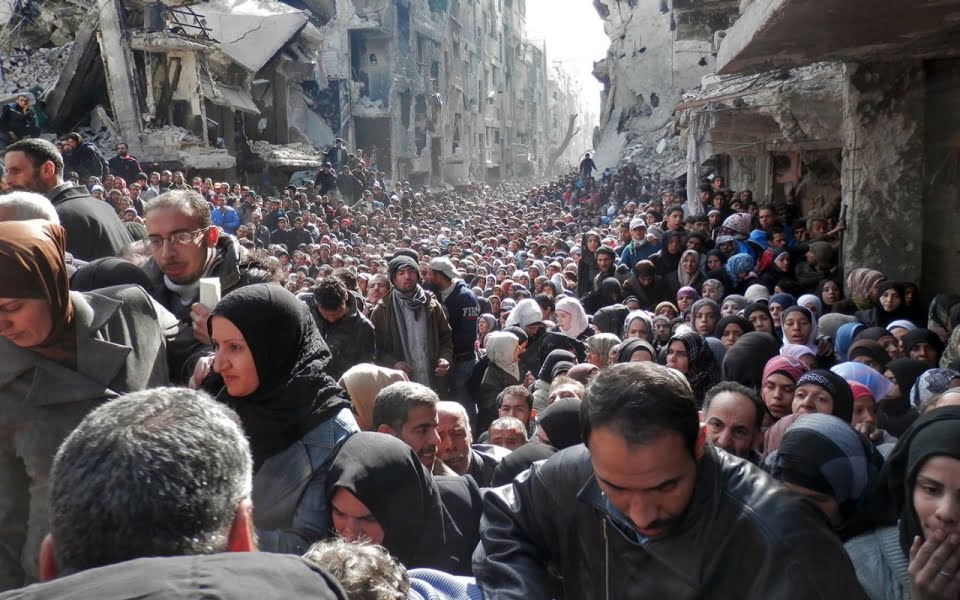At the start of the Syrian conflict, the UN Human Rights Council created an independent commission of inquiry, made up of a team of investigators and human rights lawyers, to investigate alleged human rights violations. Back then, the bulk of the violations were related to the government’s violent suppression of peaceful protests. The commission of inquiry would analyze reports of violations, including YouTube videos of police firing on protesters, and report evidence suggesting widespread human rights violations against protesters.
Today, The Commission of Inquiry released its 11th report. And looking back, that first report seems almost quaint.

Back then, most of the violations were directed against a specific set of people: those protesting the government and their alleged supporters. To be sure, the violations were awful: extra-judicial executions, mass incarceration, torture and sexual violence. But by and large, these kinds of human rights violations were typical of a government that wanted to suppress a burgeoning protest movement.
But now, five years later, the strategic logic underpinning the commission of widespread crimes against humanity have shifted as the conflict has morphed into a complex civil war. This newest report offers insights onto how various armed groups are using atrocities against civilians to advance their strategic gains. The sum total of these human rights violations have left much of Syria nearly totally eviscerated of civilian infrastructure. Chapter 4 is simply titled “destruction of a country,” and offers details in the ways in which civilian infrastructure, schools, hospitals and public spaces have been summarily destroyed. A sampling:
-Government air forces twice bombarded a girls’ school in Duma on 13 December. The second attack struck the school during first-aid and evacuation efforts; 19 civilians were killed, including the school director and 15 students. There were no military objectives in the vicinity.
-Millions of Syrian residents have little or no access to electricity and running water. In some instances, notably in besieged areas, electricity and water have been deliberately cut, intensifying the suffering of the civilian population within. In other areas, incidental destruction and damage to electrical grids and water pumping stations from clashes or bombardments have caused cuts.
-Government forces targeted hospitals and medical clinics in areas not under their control. Of the 33 hospitals open in Aleppo city in 2010, fewer than 10 are still functioning. Attacks on health-care infrastructure resulted in little or no medical help being available for serious injuries. A survivor of a rocket attack on Kafr Hamra neighbourhood, Aleppo city, on 29 October described a young relative dying while en route to Turkey to receive treatment.
-Government forces continue to strike markets, bakeries and venues offering humanitarian assistance. On 30 June, 12 and 16 August, 30 October and 13 December, residents of Duma were killed while shopping in vegetable and meat markets. On 12 August, government planes struck three separate markets. Four days later, a crowded Sunday market was struck, killing 100 people. There appears to be no military justification for these attacks. The strike on Sad al-Looz market in Al-Shaar neighbourhood, Aleppo city, killed more than 25 civilians shopping for Eid.
But perhaps the most jarring aspect of this latest report is that it’s not just the physical destruction of a country. Rather, the social fabric of a diverse country is being torn to shreds.
-Following an air strike on a vegetable market in Duma on 30 October in which at least 50 civilians were killed, Jaysh al-Islam used metal cages to parade men and women belonging to the Alawite sect through the streets of their stronghold in eastern Ghutah (Rif Damascus). In an attempt to deter further aerial attacks and to send a clear message to the Government, the captured civilians and government soldiers were used as human shields.
-In October, the remains of 22 men belonging to the minority Murshidi Muslim sect were discovered in the Al-Ghab valley of Hamah, an area against which Jabhat al-Nusra and anti-government armed groups had launched a coordinated attack in August. All victims bore signs of severe torture, and many were found with their hands bound and teeth pulled. It is unclear whether the dead were civilians or captured fighters, and the extent to which their religious background motivated the attack.
-When Christian communities seek the protection of opposing forces, as did Assyrian Christians living in villages along the Khabur River (Hasakah) from YPG in February 2015, ISIS attacked, turning the area into a front line. During the assault, the terrorist group kidnapped between 220 and 250 Assyrian civilians, including women and children. In early October, it released a video showing the execution of three male captives. In November, 37 elderly civilians were released; in January, an additional 16, including eight children, were reportedly released. At least 60 Assyrians kidnapped in Hasakah are still held by ISIS.
The list goes on.
There will likely be a 12th report, published in sixth months time. And if present trends continue that report will be even more jarring than the one that preceded it. Still, these reports are useful for the international community for two main reasons. First, these reports from the commission of inquiry are the most credible, comprehensive, and independent collection of human rights violations being committed during the Syrian civil war. Second, if there is to be any sort of accountability for these war crimes, these reports will serve as evidence in the dossier compiled against war criminals.
That seems a long way off. So, for now, the most basic way the international community can serve the cause of justice is to document the crimes and their victims.
Full report here.
